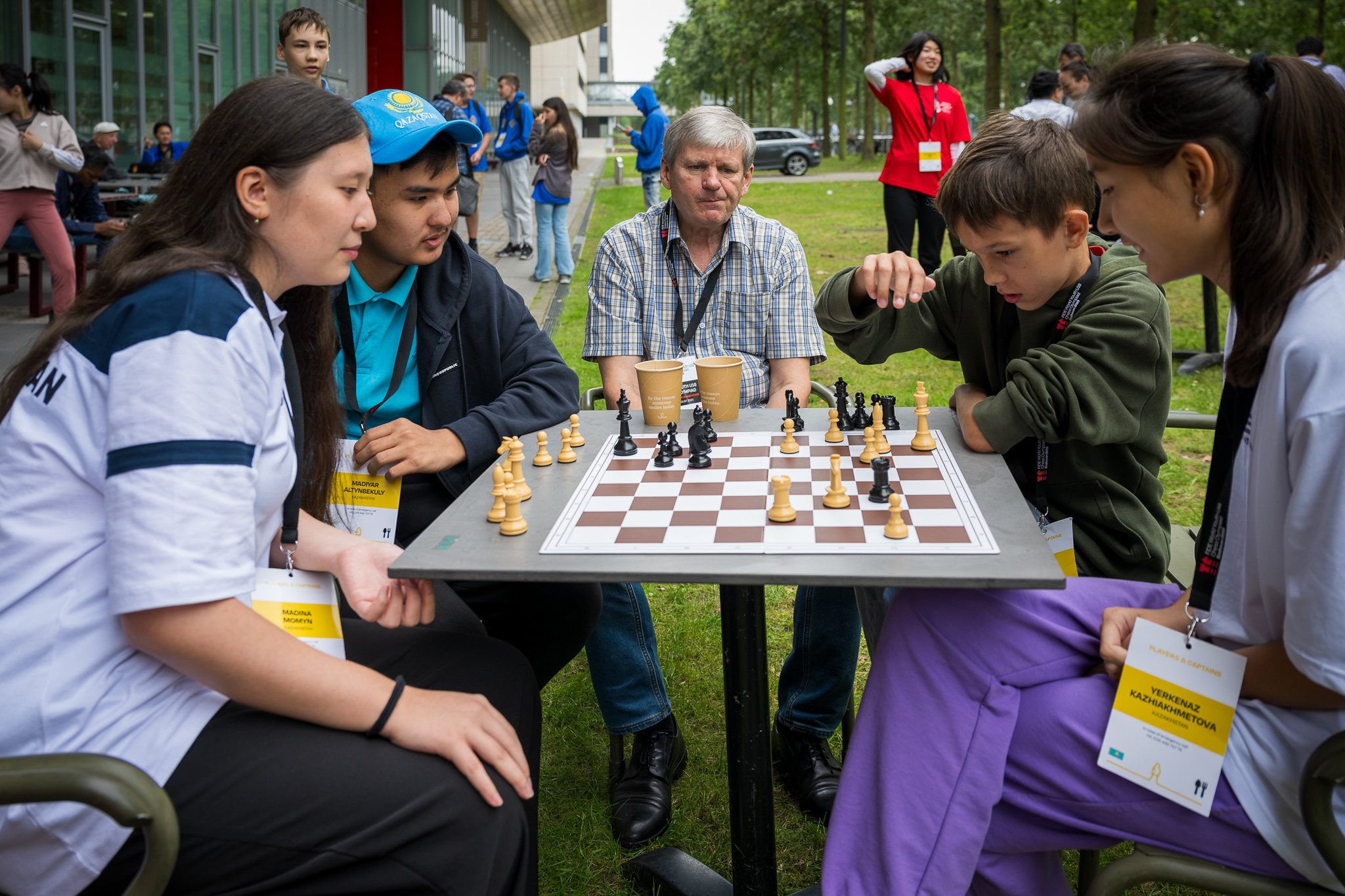At the start of round 4 there were three leaders with 2,5 out of 3: Marsel Efroimski, Josefine Heinemann and Anastasia Avramidou. When the dust had cleared at the end of another exciting round we had a sole leader.
In Alicja Sliwicka versus Marta Garcia Martin we saw a popular line of the Scotch Four Knights. The favourite equalizer of the top players (9…Bg4) was played by the Spanish IM. Now it is known that 11.dxc6 Qd4+ will lead to a drawish position. Alicja went for 11.Bg5 instead. Here 13.Ne4 Bxe1 is known from a high-profile game between Nepomniachtchi and Caruana. In the game 15…Be7 was slightly inaccurate, which could have been emphasized by a trade of bishop for knight on move 21. As things went 21…Nd6 led to full equality and a draw.
Josefine Heinemann went for the same Giuoco Piano as in her previous game. Petra Papp diverted with 11…Qe7 from Avramidou’s immediate 11…Be6 (as played in round 3). When on the next move the Hungarian offered the trade of bishops she could take back on e6 with the queen. When next the dark-squared bishops were exchanged as well Black had a comfortable game. The players soon found themselves repeating moves.
Anastasia adopted Chigorin’s favourite 2.Qe2 against Machteld’s French Defence. An interesting moment arose at the start of the middlegame. Anastasia correctly went for the modest 12.d3. The outwardly active 12.d4 is well-met by a full scale trade on d4 when 16.Rxd4 Nc6 17.Rd1 Rc8 gives Black sufficient counterplay for her backward d-pawn. After 12…Kh8?!, however, it would have entirely possible to go for 13.d3-d4. The delayed central push is much stronger with the Black king on h8. A wholesale trade on d4 leads to a good game for White after 17.Rxd4 Nc6 18.Rd1 Rc8 and now 19.Qb2+ Kg8 20.f4. In the game White was still fine, and if she had met the natural (but too optimistic) 16…f5 with 17.exf5 (and only after 17…Bxf5 18.Nh4!) Anastasia would have obtained an edge. Instead the immediate 17.Nh4 was well-met by 17…f4!. Things went from bad to worse, and Machteld soon had an extra pawn and a nice positional edge which she converted into her first win.
The Bogo-Indian was Marsel Efroimski’s choice to play for a win as Black against Robin Duson. Her 7…c5 was certainly ambitious, but it could have backfired after the immediate 8.Nc3 (8…cxd4 9.Nb5!; 8…Bb7 9.d5!). Robin instead traded on c5 first, which removed the possibility of playing d4-d5 altogether. 12.Qc2 was a mistake. Marsel correctly grabbed the c4-pawn anticipating an exchange sacrifice a few moves later. With two pawns and strongholds for a powerful knight her compensation was obvious. The result was no longer in doubt, and the final combination is perhaps not very difficult but attractive nevertheless.
Janowski’s 3…a6 in the Queen’s Gambit is all the rage, and it was how Laura Unuk chose to combat Trisha Kanyamarala. Trading on f6 followed by 8.Qb3 may look uncomfortable for Black (forcing 8…Ra7), but Black is in fact fine. Trisha developed quietly which enabled Laura to do the same returning her rook to a8 on move 14 with a comfortable position (for what it is worth Black has a pair of bishops). Laura made a mistake with 22…g5?, when after 23.Nxe6 Qxe6, Trisha could have obtained a stronghold for her bishop on f5 with 24.g4!. Instead she returned the favour with 24.e4?! when Laura was at least equal. On move 36 moving the king into the corner was a mistake – instead 36.Kf1 was holdable. Laura obtained a winning attack with only queens and opposite-coloured bishops on the board. Eager students of the game may be reminded of the classical Reshevsky-Bronstein game from Zurich 1953.
So with 3,5 out of 4 we have a sole leader in Marsel Efroimski!


